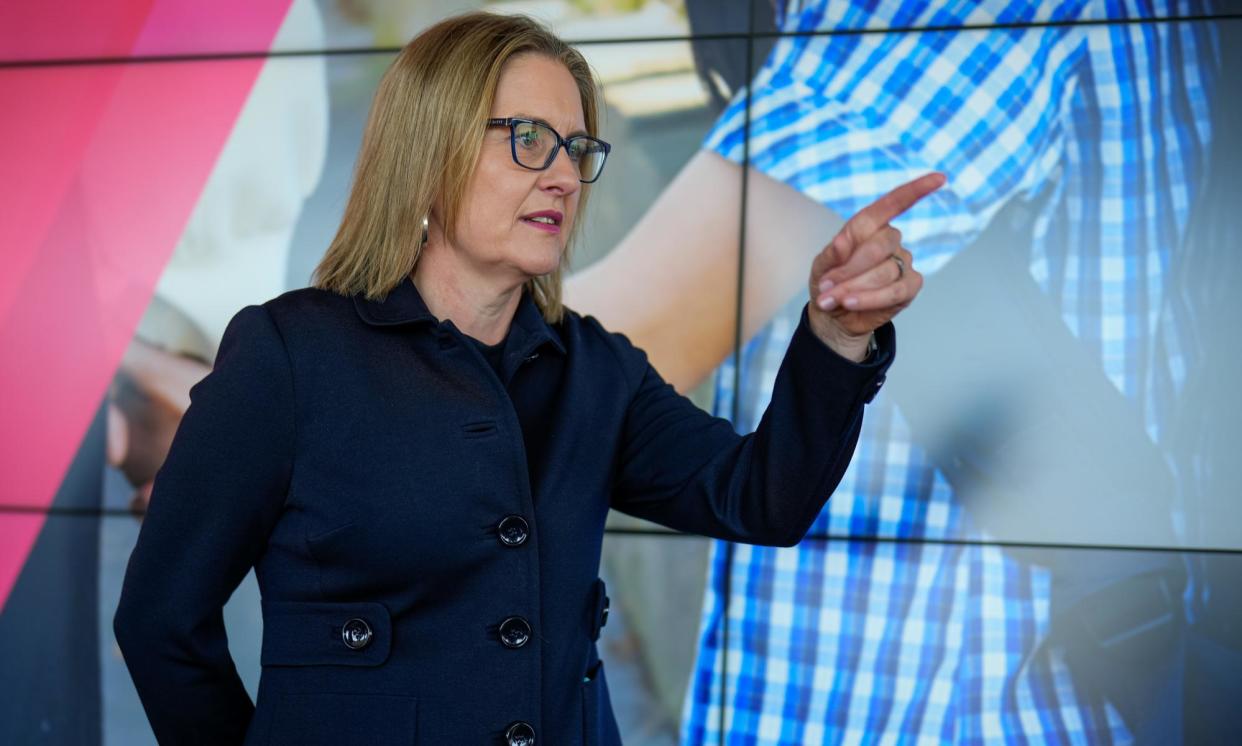Jacinta Allan might have offered a bold vision for Victoria. This is what Labor’s budget delivered instead

What is the new premier’s vision for Victoria? Those hoping her first budget would answer this question – including plenty of her own MPs – may be feeling a little bleary-eyed.
Ostensibly, Jacinta Allan says her first budget as premier is “all about helping families”.
In a video beamed into the annual media lockup, she said she understood how “tough” things were for Victorian families, thanks to higher interest rates and the “cost of groceries and everything else” continuing to climb.
She pointed to the main sweetener of the budget – a $400 payment to each child in government-run schools to help with the cost of uniforms, camps and sporting activities – as a way the government was taking “pressure off the family budget”.
But for single people, couples without children and older Victorians, there is little relief from the same cost-of-living pressures – save for an extension of rebates for those making the switch to solar power and electric hot water systems.
The budget identifies rising housing costs as a “substantial contribution to cost of living pressures” but there is only $107m allocated to help the government reach its target of 800,000 new homes over the next decade – and it is unclear what this funding will do.
It said renters make up almost a third of all Victorians (not to mention they are emerging as a key voting cohort) but there is nothing for them.
While the budget highlights that “home ownership has become more difficult for young people”, a shared equity scheme that has helped thousands of Victorians buy their first home will be extended for just one more year. It will eventually be replaced with a yet-to-be unveiled federal scheme and, again, it is unclear what involvement the state government will have.
After another year of speculation around stamp duty reform, it did not eventuate.
Then there’s the decision to delay and cut several infrastructure projects and 2022 election commitments. The largest of these are the new hospital development near the site of the future Arden station in North Melbourne (scrapped) and the long-awaited Airport Rail Link (delayed for at least four years).
Meanwhile, the state’s biggest infrastructure project, the Suburban Rail Loop, forges ahead, without a total price tag.
While Allan claims the budget “invests to keep delivering free kinder for families”, a plan to double the number of subsidised hours – from 15 to 30 hours for four-year-olds and five to 15 hours for three-year-olds – has been delayed.
With the exception of some services in regional Victoria, the rollout will be completed in 2036 rather than 2032, which will likely make it harder for some women to participate fully in the workforce.
The rollout of mental health and wellbeing hubs – a key recommendation of the royal commission into the sector – will also be slowed down.
The government maintains it is committed to both reforms but said they have to be delayed to allow the workforce to catch up. This was foreseeable.
Other “savings and efficiencies”, totalling $1.79bn, include ending the sick pay guarantee, cutting public sector office space and government advertising. There’s also a couple of increased (read: not new) taxes.
In spite of all the talk about “sensible and disciplined decisions” the budget shows the state’s spending will grow – and debt continues to soar – to a record $187.8bn by 2027-28. Interest repayments alone will cost the state $26m a day by then.
The opposition has already capitalised on this, saying the state will be “spending more on interest than on families”.
The Greens, meanwhile, are continuing to leverage frustration with government inaction on “rising costs of rent, mortgages, groceries and healthcare”. It has described the $400 student payment as the budget’s singular “dangling carrot”.
Allan followed the footsteps of her predecessor, Daniel Andrews, and briefly attended the lockup to speak to journalists.
But unlike Andrews, who was unafraid to target taxes at specific groups in his budgets to help fund reforms and to pay down debt, Allan has opted for tinkering around the budget edges.
With an election two years away – now was the time to do something bold and make hard decisions in the hope that voters will forgive and forget. Instead, the Allan government has opted for a forgettable budget that lacks long-term vision for the state.

 Yahoo News
Yahoo News 
